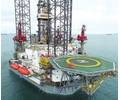Compared to the automotive and aerospace industries, the oil and gas sector has been slow in its uptake of optimization through analysis in the early design phase.
It should be viewed as a fundamental requirement for the successful design of all offshore risers and conductors for instance, rather than simply a means to validate it.
For decades, varying forms of analysis have been widely used in other industries to virtually prototype and test. Through these methods, original equipment manufacturers are able to significantly reduce the number of prototypes being built to achieve successful tests. So much so, that a successful test is expected at the very first attempt, even in complex events such as crash testing.
In the oil and gas sector, a different approach is often taken, where the design is chosen based on past experience and equipment is procured before being validated. This approach is often successful, but negates any opportunities to improve or make savings. If commissioned early in the project lifecycle, such as through Aquaterra’s Well Start specialism, optimization can secure significant cost savings and can be used to achieve more capacity and extended life.
For example, for those drilling through a platform from a jackup in severe conditions, there is the potential to optimize the design and increase operating envelops, as well as decrease conductor sizes, which in turn reduces loadings into the structures and other components. If optimization is carried out in the virtual environment, all these factors serve to realize significant savings and alleviate risks. As such, a good analysis project should offer operators a net saving of potentially £100k’s or even millions, rather than being seen as an extra, unnecessary cost.
Optimization will ultimately improve safety, limit downtime, save significant rig and equipment costs, and protect operators in the long run by having the most suitable designs.



